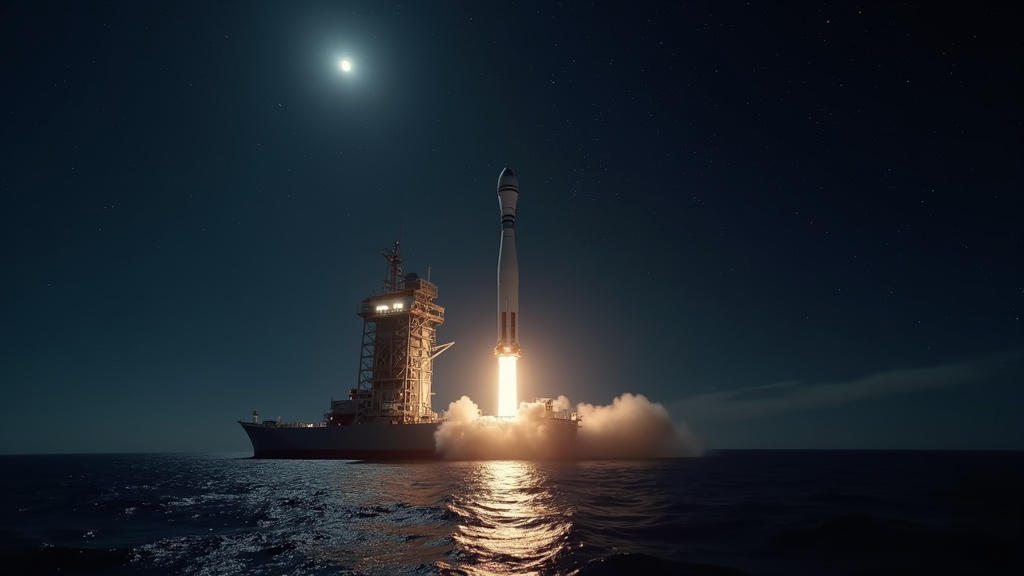SpaceX has achieved a pair of significant milestones this week, underscoring its relentless drive in space exploration and reusability. A SpaceX Falcon 9 rocket booster, B1067, completed its remarkable 30th flight and landing on August 28, 2025, setting a new industry record for an orbital-class rocket. This achievement coincides with the success of Starship’s tenth test flight, which met critical objectives and provided invaluable data for the future of space travel.
Falcon 9 Marks 30th Flight, Pushing Reusability Boundaries
On the morning of August 28, SpaceX launched its Falcon 9 rocket from NASA’s Kennedy Space Center, carrying 28 Starlink satellites into low Earth orbit. The booster, identified as B1067, etched its name in history with its 30th launch and subsequent successful landing at sea on the drone ship ‘A Shortfall of Gravitas.’ This feat solidifies the Falcon 9’s position as a cornerstone of modern spaceflight, demonstrating the viability and efficiency of reusable rocket technology. Booster B1067’s impressive flight history includes two astronaut transport missions, two cargo missions to the International Space Station, and numerous Starlink satellite deployments, showcasing its versatility. This particular mission also contributed to SpaceX’s overall tally, marking the company’s 400th successful droneship landing – a testament to its advanced recovery capabilities.
SpaceX’s commitment to reusability has drastically reduced launch costs and increased access to space, transforming the economics of the aerospace industry. The company’s aggressive launch cadence in 2025, with a goal of 170 orbital launches, is largely enabled by this focus on rapid reusability. By mid-year, SpaceX had already completed 81 launches, averaging nearly one launch every two days, a pace that allows for continuous deployment of the Starlink constellation and supports a wide array of commercial and scientific space events. This relentless pace is a major trending topic in the space sector, demonstrating SpaceX’s top-tier operational efficiency.
Starship’s Tenth Flight: A Critical Step Towards Reusability
On August 26, 2025, SpaceX’s Starship completed its tenth test flight, marking a pivotal moment for the ambitious next-generation launch system. The massive, two-stage rocket lifted off from Starbase, Texas, achieving its primary objectives, including reaching space, deploying eight Starlink simulators, and successfully executing an in-space Raptor engine relight. This mission was particularly important as it tested Starship’s capabilities under intentional stress, gathering crucial data on its heat shield performance during re-entry.
During the fiery return through Earth’s atmosphere, some heat damage was observed on the engine bay skirt and control flaps, which SpaceX attributed to pushing the vehicle’s limits. However, the Starship maintained control throughout the descent, performing a landing flip and a controlled splashdown in the Indian Ocean. The Super Heavy booster also performed its boostback burn and initiated a landing burn, successfully compensating for an intentionally disabled engine to demonstrate resilience in off-nominal scenarios.
Paving the Way for Lunar and Martian Missions
The success of Starship’s tenth flight has direct implications for NASA’s Artemis program. Acting NASA Administrator Sean Duffy congratulated SpaceX, stating, “Flight 10’s success paves the way for the Starship Human Landing System that will bring American astronauts back to the Moon on Artemis III.” NASA relies on Starship as a critical component for its lunar landing objectives, aiming to return humans to the Moon. This major global event in space exploration reinforces the collaborative efforts between government agencies and private companies.
Furthermore, the data gathered from this test flight will inform future designs, driving SpaceX closer to its ultimate goal of a fully reusable Starship capable of supporting missions to Mars. The cost-effectiveness and increased launch frequency brought about by reusable technology are not just major achievements for SpaceX but are fundamentally reshaping the entire space industry, opening doors for new commercial ventures and scientific endeavors.
In conclusion, SpaceX’s dual achievements – the record-breaking 30th flight of a Falcon 9 booster and the successful tenth test flight of Starship – represent significant strides in the company’s mission to revolutionize space access. These major events highlight SpaceX’s relentless innovation and its central role in driving the future of space exploration, from low Earth orbit to the Moon and beyond.





